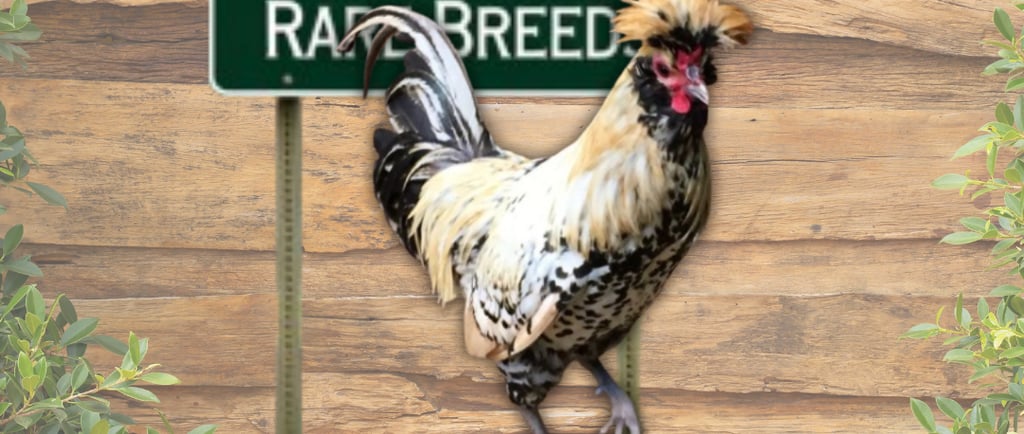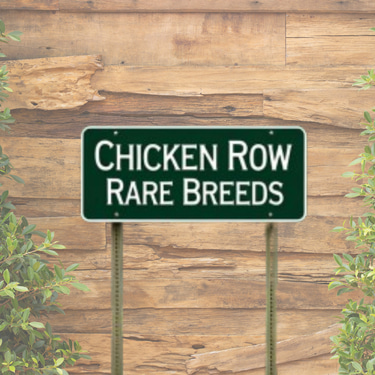Cream Brabanter
A rare Dutch heritage breed with a stylish crest and unique charm
8/22/20252 min read


🐓 Cream Brabanter: The Crested Beauty of the Netherlands
Elegant, crested, and centuries old, the Cream Brabanter is one of Europe’s most distinctive heritage chickens. With its upright forward-sweeping crest, unique V-shaped comb, and three-part beard, this rare Dutch breed combines ornamental charm with utility. Once nearly extinct, it has been carefully revived and continues to stand out as one of the oldest recorded crested breeds in the poultry world.
📜 A Brief History
The Brabanter takes its name from the historic region of Brabant, which straddles the Netherlands and Belgium. It is an ancient breed, with the oldest known depiction found in a 1676 painting by Dutch artist Melchior d'Hondecoeter.
Brabanters spread beyond their homeland and appeared in some of the earliest poultry exhibitions in Europe, including a German show at Görlitz in 1854. However, the breed nearly vanished in the early 20th century before being revived through careful cross-breeding with other crested and bearded chickens.
A bantam version was later created in the 1930s by crossing standard Brabanters with Polish bantams, helping preserve the breed in smaller flocks.
📌 Breed Snapshot
Status: Endangered
Use: Eggs and ornamental
Egg Production: Moderate (white eggs)
Egg Size & Color: Medium; white
Weight: Roosters 4–5.5 lbs (1.9–2.5 kg); Hens 3.5–4.5 lbs (1.6–2 kg)
Temperament: Calm, intelligent, adaptable
Characteristics: Forward-sweeping crest, three-part beard, V-shaped comb, rare cream plumage
🐓 Why Choose a Cream Brabanter?
Unique Appearance
Brabanters are instantly recognizable by their upward and forward-sweeping crest, slim V-shaped comb, and full beard that covers their wattles and earlobes. The cream coloration adds an elegant, soft-toned beauty that sets them apart in any flock.
Cold-Hardy
With their small combs and hidden wattles, Brabanters are less prone to frostbite than many other breeds, making them a good choice for northern climates.
Adaptable & Calm
Unlike some crested breeds, Brabanters are known for being calm, intelligent, and able to handle confinement as well as free-range conditions.
Heritage Value
As an ancient European breed that almost disappeared, keeping Brabanters helps support the conservation of rare and endangered poultry.
🛠️ Care Considerations
Moderate Layers – They produce a steady but not high number of white eggs.
Broodiness – Brabanters rarely go broody, so artificial incubation may be needed for breeding.
Crest Care – Their crests can become messy in wet conditions; providing a dry, draft-free coop is essential.
Cold Hardy – They thrive in colder regions thanks to their beard and smaller comb.
🧬 Appearance at a Glance
Crest & Beard
Narrow crest that sweeps forward and upward
Distinctive three-part beard covering wattles and earlobes
Comb
Slim V-shaped comb
Plumage Varieties
Cream is one of the rarest, alongside black, white, cuckoo, gold spangled, laced blue, silver spangled, and chamois
Size
Roosters: 1.9–2.5 kg (4–5.5 lbs)
Hens: 1.6–2.0 kg (3.5–4.5 lbs)
Eggs
Medium white eggs, moderate yearly production
🧡 Heritage and Conservation
The Cream Brabanter is listed as an endangered breed, with limited flocks kept by preservation breeders in the Netherlands, Germany, and beyond. Enthusiasts value it not only for its ornamental qualities but also for its role as one of Europe’s oldest crested chickens.
🧠 Final Thoughts
The Cream Brabanter is a rare jewel among heritage breeds. With its unique crest, elegant plumage, and calm temperament, it is both a beautiful ornamental bird and a practical cold-hardy egg layer.
If you’re looking to preserve history while adding striking beauty to your flock, the Cream Brabanter is an exceptional choice.
Did You Know?
The Brabanter is one of the oldest documented crested breeds, appearing in art as early as the 17th century.
Unlike Polish chickens, their forward-facing crest doesn’t block their vision.
A bantam version was created in the 1930s, helping ensure the breed’s survival.
